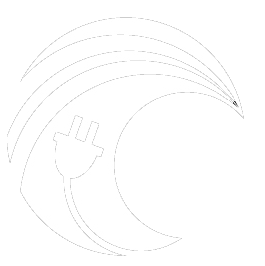by Ali Trueworthy
28 March, 2019
An individual may never be an expert in marine energy. There are plenty of experts working in the field, but they are experts in hydrodynamics, acoustics, control systems, design, oceanography, coastal dynamics, sociology, community dynamics, marine biology, naval engineering, mechanics, robotics, natural resource management, or one of many other disciplines which make up the community here at PMEC. That’s right, they are all here - and that is what makes PMEC so special. As co-director Bryson Robertson puts it, “PMEC has an important role because of its breadth. Each topic in isolation can misdirect.” A conclusion in an isolated topic of research, though meaningful, must be viewed within the bigger picture to fully understand its implications. At PMEC, the strokes of many brushes paint that bigger picture. d
Students, staff, and faculty of PMEC at OSU come together to welcome newcomers from several departments, share research, and enjoy coffee treats.
By having a range of experts within the center, individuals can gain an understanding of how their research fits in with the social, economic, and environmental, as well as technical aspects of marine renewable energy. In doing so, we may recognize new areas for examination of our conclusions. Acknowledging the multiple perspectives is our job as researchers, as is conducting fair and thorough research. We must, Robertson points out, ‘remain honest about the opportunities, challenges, and costs [of marine renewable energy]; and actively work to develop solutions.” As many people worry about the future of our energy sources, PMEC works not to blindly promote marine renewable energy, but to understand how it can best contribute to a solution to global climate disruption and energy security.
About 150,000TW of solar power is incident upon the earth at a given moment. About 0.05% of that energy is converted into wind. When wind blows over the surface of the ocean, it creates waves. Though waves only contain a fraction of a percent of the energy from the sun, the concentration of that energy is much higher than the concentration of solar irradiation. With today’s satellite and communication technologies, we can accurately predict when that wave energy will be available. The concentration of energy in waves and our ability to forecast them are two things that make us excited about wave energy as a renewable energy source.
Along with wave energy, researchers at PMEC also work in tidal and current energy. Tides are long period waves caused by the gravitational pull of the moon. In areas where the difference between high and low tide is great, there is a significant amount of energy available for capture in the moving water. If you have lived in a place where the tidal range is large, you likely also know that the tides are predictable in both time, size, and location. These features are excellent qualities for an energy source, and one of the reasons we continue research on energy capture from tidal, river, and ocean currents. Waves and currents can be influenced by the shape of the ocean floor (especially near shore), which can differ significantly from place to place just as the land does. The mountains, valleys, plateaus, and planes we see on land can all be found as features of the ocean floor.
Off the Pacific coast of Costa Rica, the low tide exposes rocks covered in barnacles, seaweed, and creatures of the intertidal zone. A land mass is visible in the distance, rising from the ocean.
On a map, the ocean is blue. Its creatures, curves, and constant motion are homogenized into a solid, shapeless mass. The waves and currents that drive our research are rarely included on these maps. But as we stand at the coast and turn our heads toward the sea, we know the ocean cannot be merely a mass of water surrounding the land. A sense of wonder crashes upon us as our eyes move to the horizon- where the water disappears into the sky. The enormity of the ocean hides many truths that scientists are only beginning to uncover, but what we know challenges us to use its motion, overcome its force, and withstand its salinity while protecting its creatures and respecting those who are most dependent on it.
At PMEC, some of us grew up on the ocean and have allowed childhood wonder to carry us into research we enjoy, some of us thrive on being a part of foundational research, some of us are driven by the need for change in the energy industry, and still others find motivation where not even they expect it. Our diverse set of research and motivations has given us many stories to tell. We hope that you will come back each month to learn more about the exciting work being done here at PMEC!


